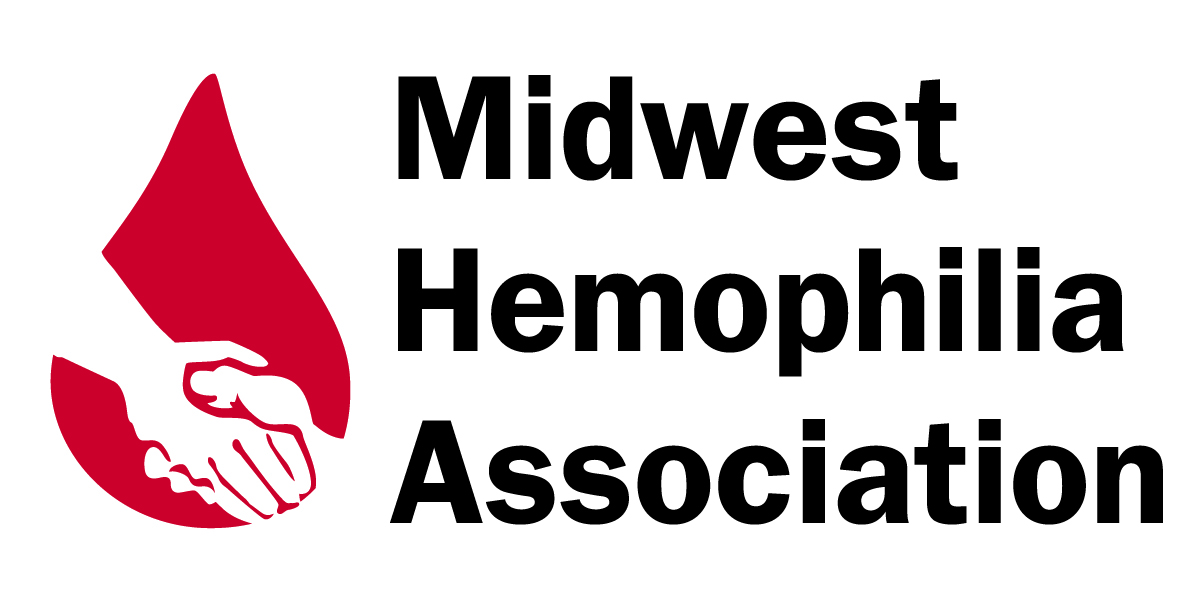There are numerous bleeding disorders. The most common ones are hemophilia and von Willebrand Disease.
Hemophilia is an inherited bleeding disorder caused by a deficiency or defect of one of the proteins necessary for blood to properly clot. These proteins are known as clotting factors. The type and severity of a person’s hemophilia depends on which protein is involved and to what degree they are deficient. The most common forms are hemophilia A (classic hemophilia), a deficiency of Factor VIII and hemophilia B (Christmas Disease), a deficiency of Factor IX. Hemophiliacs do not bleed to death from minor cuts or injuries, nor do they bleed faster; they bleed longer because their blood cannot form a firm clot. Often, bleeding is internal, into joints, and results in arthritis and crippling. Hemophilia affects mostly males and occurs in 1 of every 4000 male births.
Von Willebrand Disease is a hereditary bleeding disorder characterized by bleeding from mucous membranes (i.e. mouth, nose, throat, gastrointestinal tract) and skin surfaces. Excessive bruising, nose bleeds, heavy menstrual cycles (menorrhagia) and excessive bleeding following extraction of teeth or tonsils are the most common symptoms of von Willebrand Disease. Since it is a hereditary disorder, family history is usually positive for a bleeding tendency in other family members. Von Willebrand Disease differs from hemophilia in that it affects both males and females. It is the most common inherited bleeding disorder. About 1% to 3% of the population is affected.
Better You Know – Betteryouknow.org is a website for women and men who may experience symptoms of a bleeding disorder but have not been diagnosed. With this site, the National Hemophilia Foundation (NHF) hopes to raise awareness and knowledge of bleeding disorders as part of our Better You Know campaign. You can also find helpful information by visiting Hemophilia Federation of America (HFA).
Treatment
Replacing the deficient clotting factor treats hemophilia. This is done via infusions of plasma derived factor concentrates, further purified by monoclonal antibody procedures or artificially produced through recombinant DNA technology. Many patients are on a home infusion program whereby they self-infuse the clotting factor concentrate when they bleed. This ensures prompt treatment and gives them greater independence. The cost of treating severe hemophilia can run as high as $250,000 per year.
Complications
The most common clinical complication of hemophilia is damage to the joints that can occur when there is bleeding into the joints. Bleeding into the knees, elbows, ankles, shoulders, and hips can lead to chronic swelling and later deformity.
People with hemophilia are treated with blood products derived from thousands of donors. For this reason they are at risk of being exposed to viruses.
Hepatitis viruses were often transmitted in blood products used by persons with hemophilia. These hepatitis viruses caused problems from mild chronic infections to liver failure.
The contamination of the nation’s blood supply with HIV (Human Immunodeficiency Virus) that causes AIDS (Acquired Immune Deficiency Syndrome) in the early 1980’s was devastating to the hemophilia community. Since the mid 1980’s new screening and processing procedures have significantly decreased the threat to our nation’s blood supply.
Women with Bleeding Disorders
Although hemophilia is thought of as a man’s bleeding disorder, women can have it, too. The more common bleeding disorder in women is von Willebrand disease (VWD), which occurs in about 1% of the US population. Symptoms include nosebleeds, easy bruising, and heavy and prolonged menstrual periods that last longer than a week, also known as menorrhagia.
The National Hemophilia Foundation’s Victory for Women website has all the information you need about symptoms, testing and diagnosis, and managing your bleeding disorder. The Hemophilia Foundation of America also offers a Blood Sisterhood networking group for those seeking education, support, and peer-to-peer connection.
Medic Alert ID
A Medical Alert ID is essential for people with bleeding disorders. Wearing a Medical ID ensures emergency responders and hospital staff have up-to-date medical information the moment they need it to make informed decisions about treatment and care.
To apply for a Medic Alert ID due to financial hardship click on MHA’s Financial Assistance Program OR click on HFA’s Helping Hands: Items Assistance
NHF Publications HFA Publications
Both national organizations, the National Hemophilia Foundation (NHF’s) and Hemophilia Federation of America, offer publications containing informative resources for people with bleeding disorders and their families. These publications will be of use to healthcare providers, educators, librarians and other healthcare organizations.
Social Security Disability Benefits Guide
Kansas Department for Children & Families
Missouri Department of Social Services
